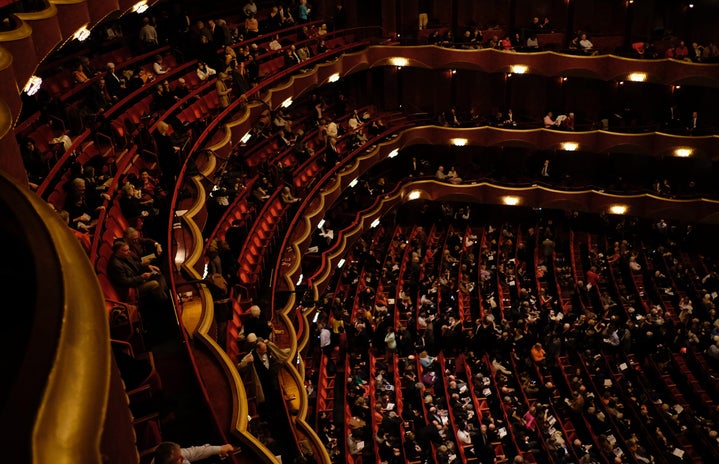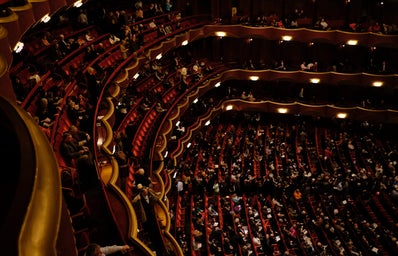In a class discussion on Orange is the New Black that occurred back in March, I expressed a dislike of the fact that on American television you almost never see characters identifying as bisexual, with many choosing the “I don’t like labels” type moniker. A classmate responded by saying how she liked that sexual orientation wasn’t a big part of the characters’ identity which got me kind of annoyed. It was the end of class, so I didn’t have time to respond. But, it made me realize the need for straight people to understand what it’s like to be questioning and how media representation can have such a large influence on how we see ourselves.
I spent seven years questioning my sexuality. I knew that I liked guys, but my interest in girls had me confused. When I heard the term ‘bisexual’, it felt like it fit, but I didn’t feel like I had a right to claim it as a label or that maybe it was just some kind of phase. When I was 12, I liked a girl, but I wasn’t sure if it was a crush or if I just really wanted to be her friend. I later found myself liking Mila Kunis and Olivia Wilde a little more than your average straight girl, but still, the bisexual label didn’t feel like it belonged to me. In my daily life, I didn’t see many bisexual people, and those who came out were treated as though they were just looking for attention and were too young to know if they were bi or not. Naturally, media was the only other place I had to look for a representation of bisexuality, and honestly, there wasn’t much there. The only bi character I saw on TV growing up was Thirteen on House. While Olivia Wilde was probably somewhat responsible for pushing me towards my bisexual awakening, her character was presented as somewhat hypersexual. She could hang with the boys at a strip club or do body shots off a stripper- an act which proved titillating for her male partner at the time. She seemed willing to get with anything that had a pulse, and I couldn’t relate to that. So, I assumed that I couldn’t possibly be bi.
Later on, my interest in women became more prominent, and while I still didn’t think I’d want to date women, I knew I wasn’t quite straight. It was around this time that I encountered Orange is the New Black. The character of Piper resonated with me in terms of her sexual identity. She was in a committed relationship with a man, but was also definitely attracted to women. On one hand, seeing her on screen showed me I wasn’t the only one like that. However, when asked what her sexual identity was, she just said that she didn’t like labels, contradicting how Piper Kerman, who inspired her character, identifies as bi. So, I figured that meant that people like Piper and I must be some kind of anomaly; we didn’t quite fit in the bisexual category.
Representation in media is important in influencing the way people view themselves and the world around them. It acts as a schema for what the world is like and how people interact with each other. What the media presents in terms of bisexual identity is how people come to perceive it. Seeing these portrayals of bisexual people, especially women represented only as hypersexual, gave me the impression that that’s what it meant to be bi. I felt like my interest in women must have been just a passing phase and that it wasn’t really indicative of my sexual orientation. I thought there was no label for me, that I was an anomaly. It wasn’t until I started reading more about sexual and romantic identities that I realized that bisexuality can come in many forms. Reading that you didn’t need to be willing to make out with anything that had a pulse or even have 50% attraction to men and 50% attraction to women was a revelation that changed the way I see myself. Being given the tools to define bisexuality for myself allowed me to figure out who I truly am.
I’m optimistic about the future of bi representation. Brooklyn Nine-nine recently gave us Rosa Diaz, who before the most recent season had not shown any indication of being bi and even after coming out did not make a big deal of it. It did not define her as a character nor was her interest in women hypersexualized, but at the same time, it was made a visible part of her identity. I can’t help but wonder that if I had seen a character like Rosa when I was younger, would I have been able to come out to myself as bi earlier?
Now, I’m not saying that everyone needs a label, but for many of us, it helps. For me, having a label gives me a sense of security and identity. Having more characters who are openly bisexual would have helped me in my questioning, and I believe it can help others who are discovering themselves. Better representation also helps others to better understand us. There are so many negative stereotypes about bisexual women that pervade in society. Many people, both inside and outside of the LGBT+ community, believe that bi people are unfaithful or greedy or that we’re just calling ourselves bisexual for attention. Media representation of bisexuals has only fueled those stereotypes, and it’s about time for it to start challenging them. I definitely don’t want to see tokenizing of bisexuals, but at the same time, I would like to see television allow a wider variety of characters to identify confidently as bisexuals, like this guy below from Crazy Ex Girlfriend who is just “Getting Bi” (in the video you can watch on YouTube).


